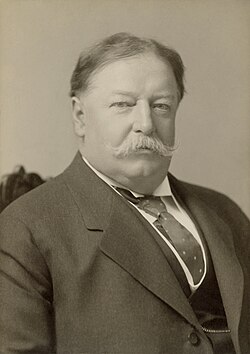📖 Presidential Profile
Comprehensive overview of leadership, policies, and historical significance
📋 Biography & Political Journey
Early Political Career and Rise to Presidency
William Howard Taft entered the presidency in 1909 following the recommendation of his predecessor and mentor, Theodore Roosevelt. Born into a prominent Ohio family, Taft had distinguished himself as a federal judge, Solicitor General, and colonial administrator in the Philippines. His extensive legal background and administrative experience made him Roosevelt’s chosen successor, though their relationship would later sour dramatically.
Taft’s presidency was marked by significant progressive legislation, including the establishment of the federal income tax through the 16th Amendment and the direct election of senators via the 17th Amendment. He also strengthened antitrust enforcement, filing 90 antitrust suits compared to Roosevelt’s 44, earning him the distinction of being the true “trust-buster” despite Roosevelt’s reputation.
Constitutional Reforms and Administrative Achievements
The Taft administration achieved remarkable success in governmental reform and efficiency. He established the federal budget system and created the Department of Labor, demonstrating his commitment to organized governance. His “Dollar Diplomacy” foreign policy aimed to substitute economic influence for military intervention, particularly in Latin America and East Asia.
Taft’s judicial philosophy emphasized constitutional interpretation and legal precedent. His approach to governance reflected his deep respect for legal processes, often frustrating political allies who preferred more aggressive executive action. “The President can exercise no power which cannot be fairly and reasonably traced to some specific grant of power in the Constitution,” Taft once declared, illustrating his strict constructionist approach.
Controversial Decisions and Political Fallout
Taft’s presidency became mired in controversy when he dismissed Gifford Pinchot, the chief of the U.S. Forest Service, during the Ballinger-Pinchot affair. This decision created an irreparable rift with Theodore Roosevelt, who viewed Pinchot as a key ally in conservation efforts. The controversy painted Taft as anti-conservation despite his actually protecting more land than Roosevelt had.
His support for the Payne-Aldrich Tariff further damaged his reputation among progressives. While the tariff did reduce some rates, it maintained high protection for many industries, contradicting campaign promises for more substantial reductions. This decision contributed to the Republican Party split that would cost Taft the 1912 election.
The Bathtub Legend and Presidential Humor
Perhaps no presidential anecdote has endured quite like the story of Taft getting stuck in the White House bathtub. While historians debate the veracity of this tale, it perfectly captured the public’s perception of the rotund president who weighed over 300 pounds. The story claimed that six men were required to extract the president from his predicament, leading to the installation of a larger bathtub.
Taft himself possessed a remarkable sense of humor about his size. When asked about his health after a particularly strenuous horseback ride, he reportedly telegraphed: “Stood trip well. Rode horseback for five hours without fatigue. Horse dead.” Such self-deprecating wit endeared him to many Americans despite his political struggles.
Humor & Jokes
Taft's Golf Game
Taft played golf so much, he made Eisenhower look like a workaholic. Presidential leisure time…
Read More →Greatest Wins
🏛️ Expansion of Civil Service Merit System
Taft significantly expanded federal civil service protections, reducing political patronage and creating a more professional,…
Read More →Epic Fails
🌲 Firing of Gifford Pinchot and the Ballinger-Pinchot Affair
Taft's dismissal of conservationist Pinchot sparked a major scandal that fractured the Republican Party and…
Read More →